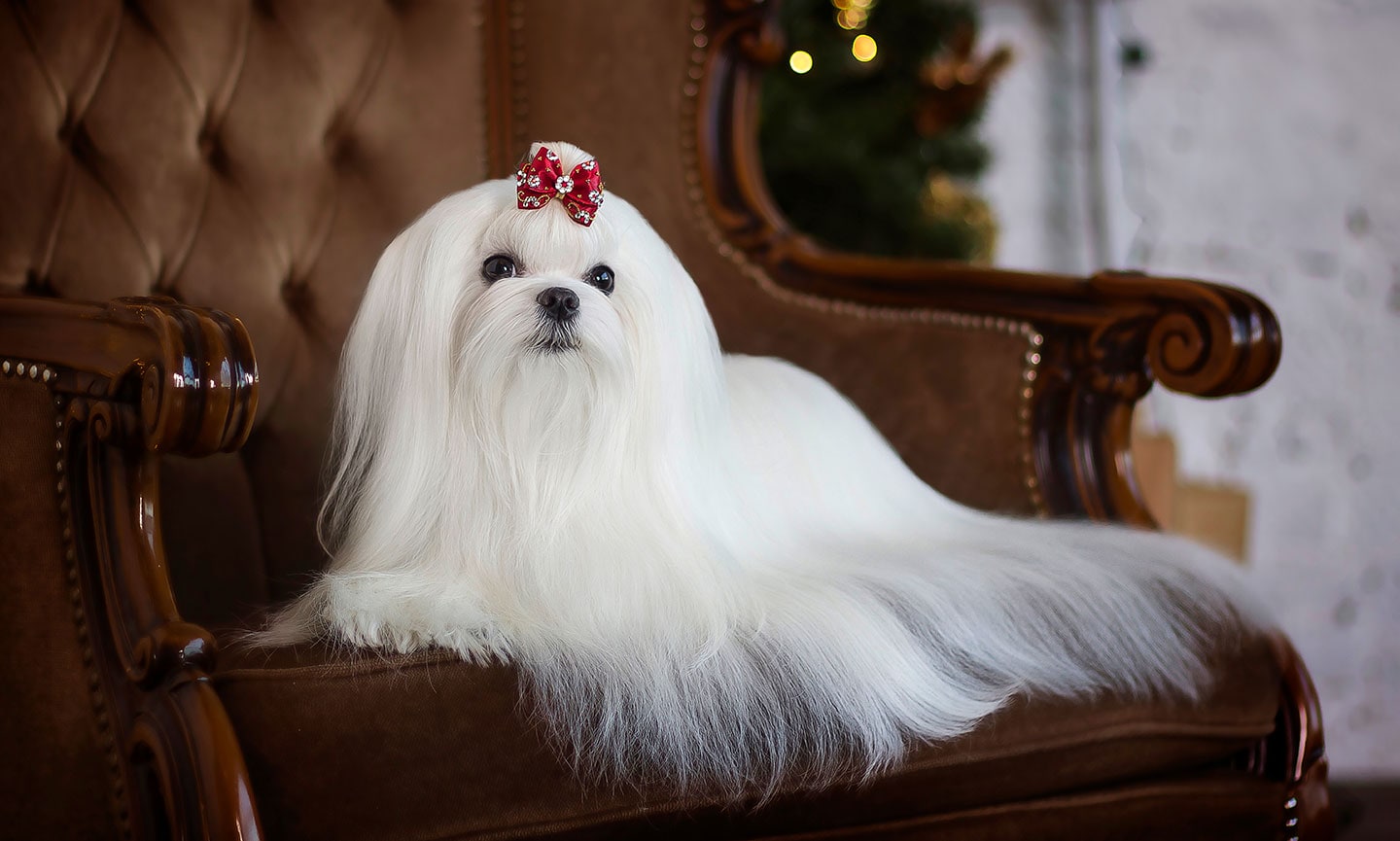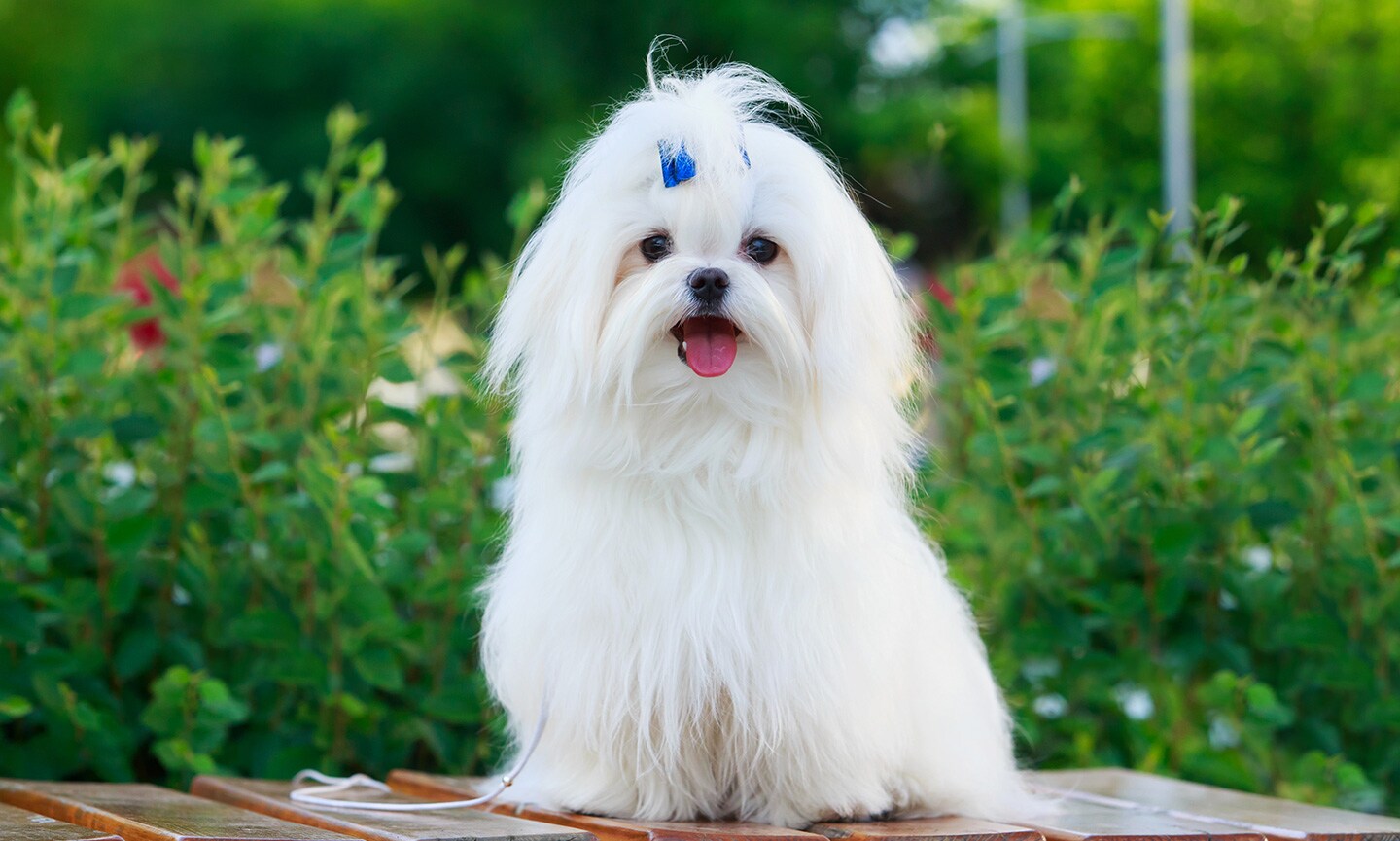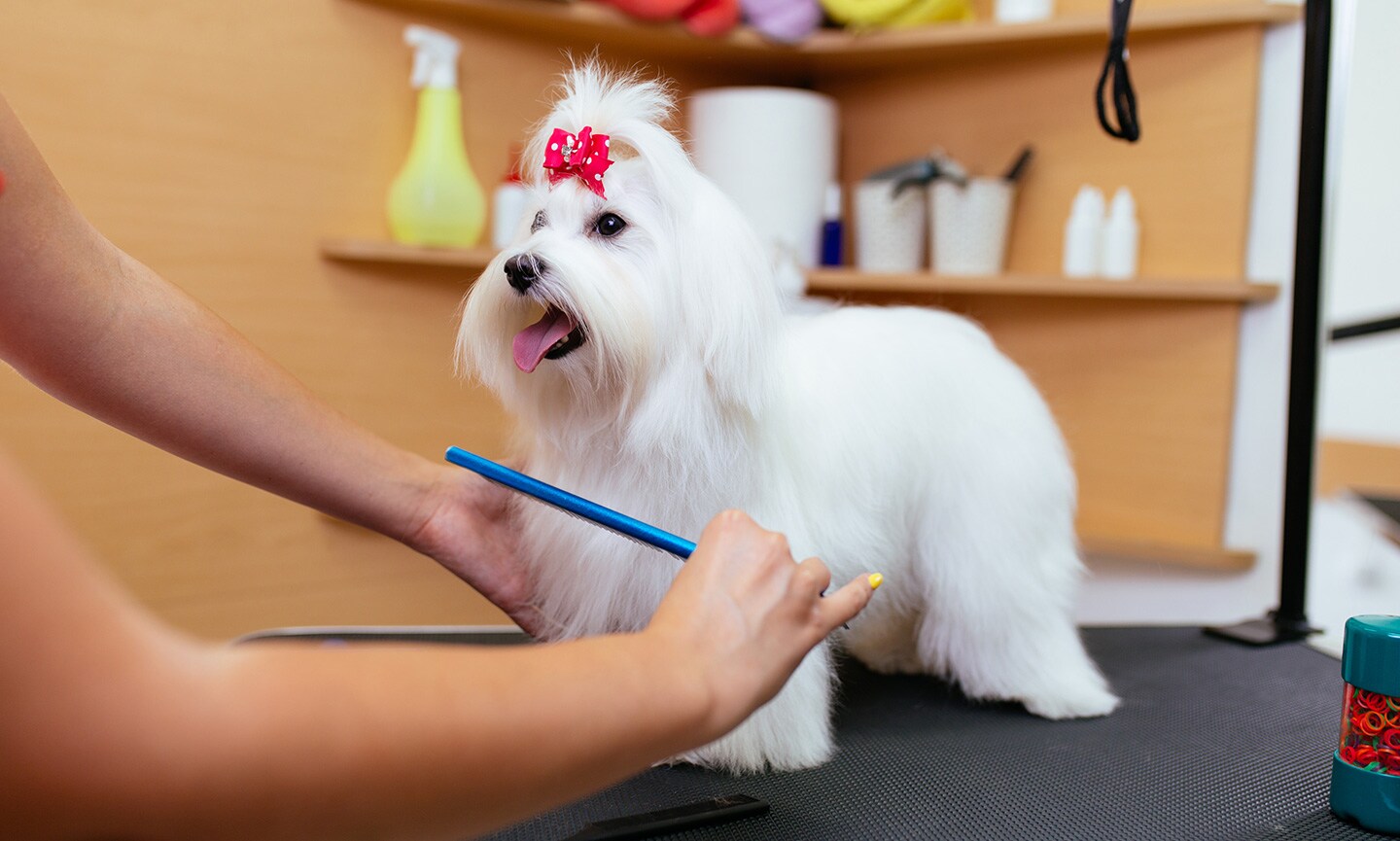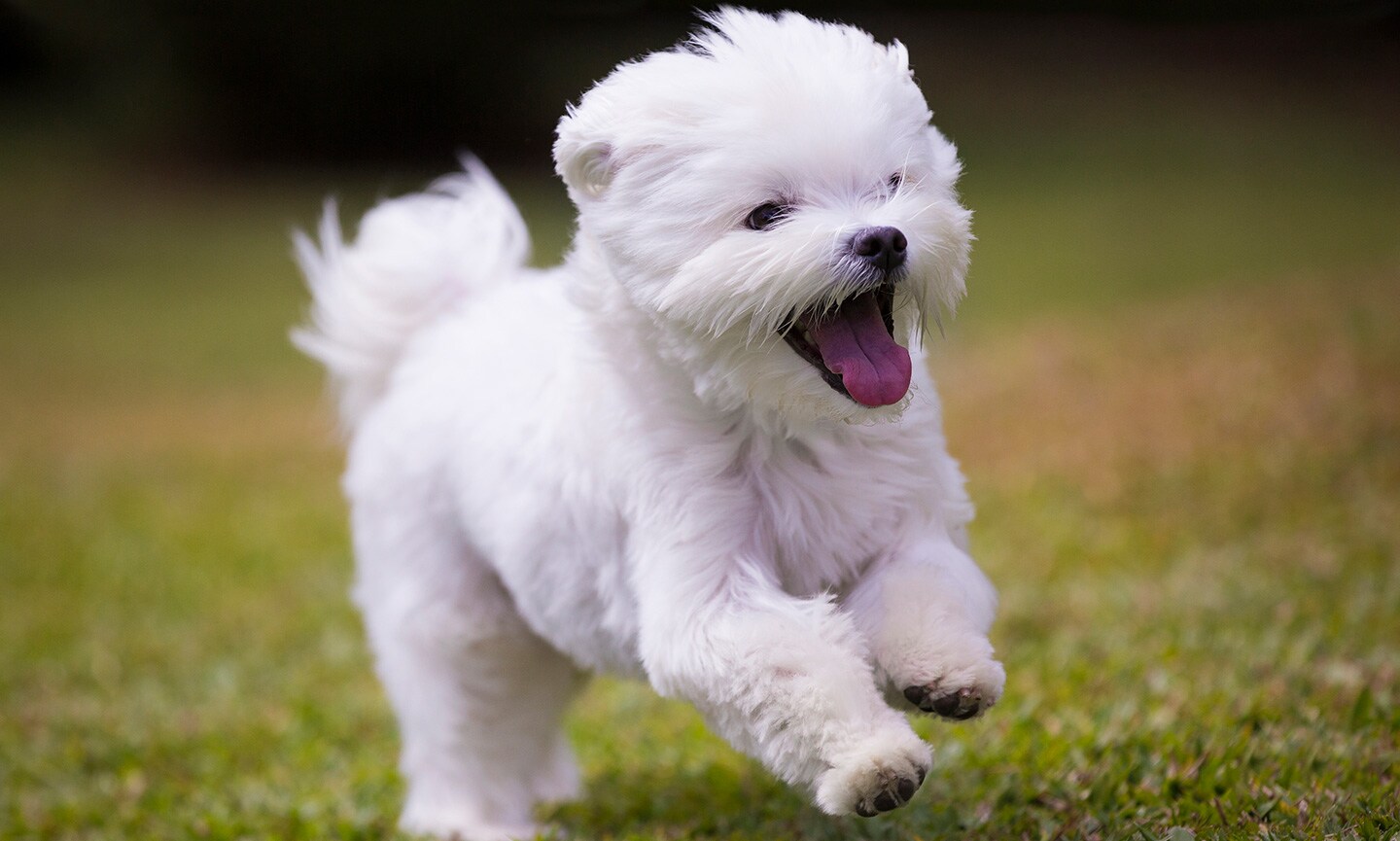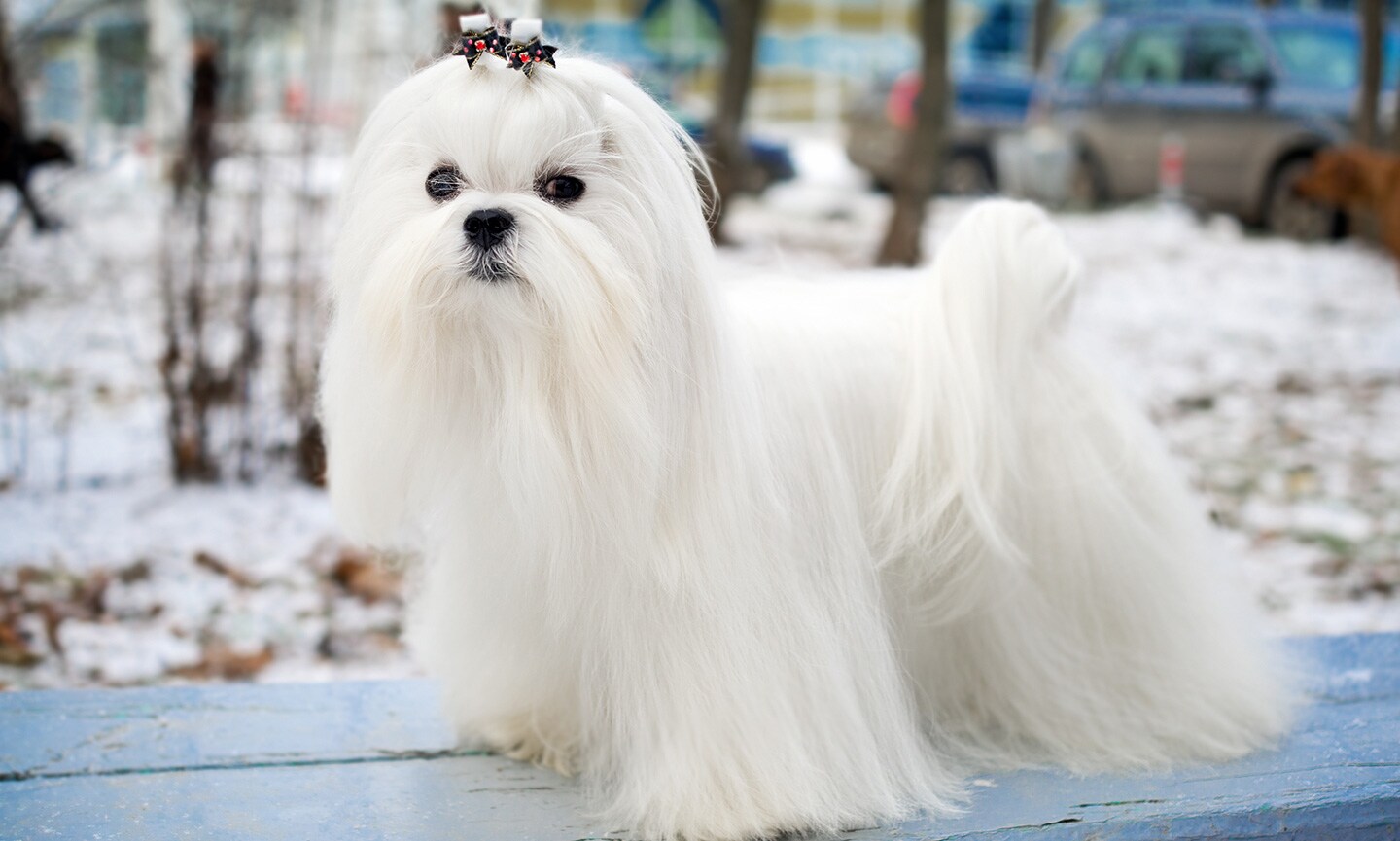Maltese
Updated January 7, 2025
Maltese
Updated January 7, 2025
The Maltese is a small toy breed known for their luxurious white coat and affectionate temperament. With a long history serving as lapdogs to society's elite, Maltese thrive on attention and make charming companions.
Lapdog, Gentle, Eager to please
Male: under 7 pounds
Female: under 7 pounds
Male: 7-9 inches
Female: 7-9 inches
12 to 15 years
White
Many dogs have a job to do—police work, hunting or herding, to name a few. But how many have lapdog on their resume? Let us introduce you to the Maltese, who throughout history served as charming companions to society’s upper crust. This petite pup prefers the finer things in life, like mani/pedis with their bestie or being your plus-one at a fancy soiree. With their luxuriously long, silky white hair and plucky personality, the Maltese is destined for magazine covers, but their favorite photos are the ones with you in them.
Maltese Characteristics
Maltese Appearance
The Maltese is a petite pup with dark, friendly eyes and a small black nose that stand out against a backdrop of luscious, long locks of all-white fur. While they traditionally have a long, silky coat, some pet parents give these little dogs short haircuts for easier upkeep.
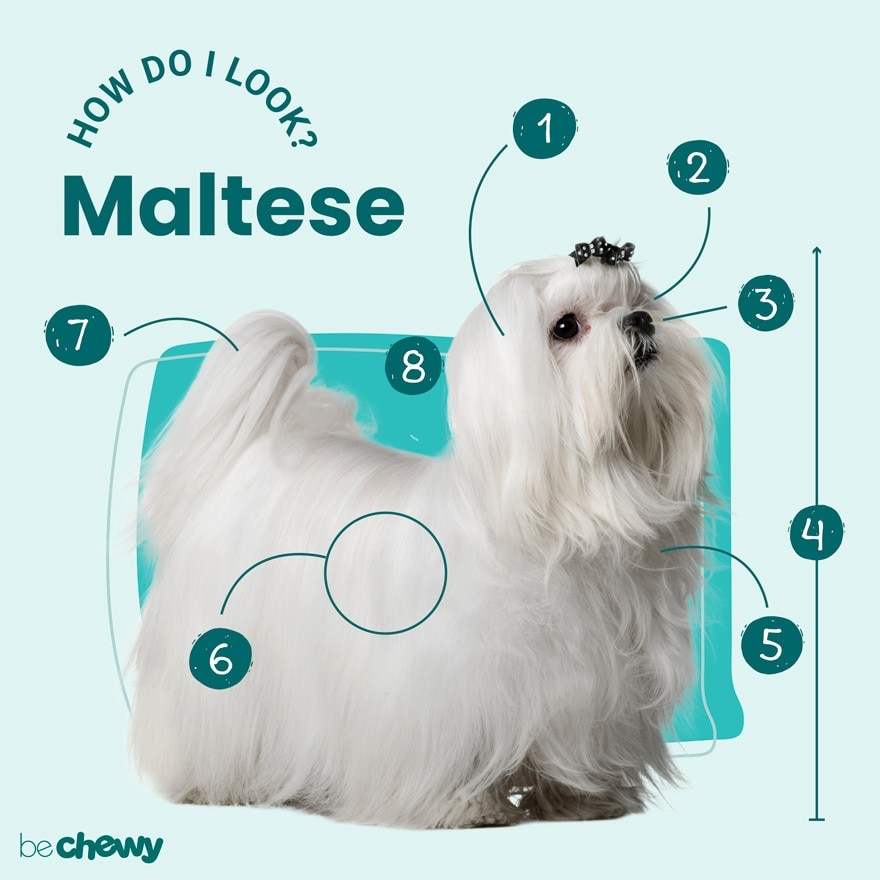
- Ears
The Maltese's feathery ears hang low and are covered with long hair. Although typically white, their ears might also have tan or lemon colors.
- Eyes
The Maltese dog's eyes are dark and friendly, with a gentle, round shape. Their eyes stand out against their all-white fur.
- Nose
They have a gumdrop-shaped black nose that stands out from their all-white coat.
- Coat Length
The Maltese breed's silky, single-layered coat is floor-length.
- Coat Color
The Maltese dog's coat is all-white. The ears may have a light tan or lemon color on them, but a completely white coat is standard.
- Tail
The Maltese breed's tail has a long, silky plume that is carried gracefully over the back. The tip of the tail rests on the side of the dog's back end.
Maltese Temperament
Due to their long history as companions animals, Maltese dogs have a love for laps and their people. Truly, their favorite place is to be wherever you are, and although they are not as energetic as herding breeds, they are lively and playful little dogs.
These friendly dogs are fairly social and generally get along well with other pets, provided they were properly trained and socialized. But even though they’re they have a gentle manner, their small weight and height make them fragile. So, they should always be supervised around very young children and babies to make sure the pup isn’t injured or overwhelmed by rough play.
The tiny Maltese has a sweet personality that makes them great therapy dogs. But more than anything else, they just want a chance to sit in your lap and be close to you.
How to Care for a Maltese
About the only thing high maintenance with a Maltese dog is their grooming needs (that silky coat does need a little extra TLC). Because of their small size and what they were bred to do (occupy your lap), they don’t have high exercise or training needs, although they still need some physical and mental enrichment, as with any dog. For the most part, this little pup is truly content as long as they’re with you.
Grooming
Training
Diet
Exercise
Environment
Maltese Health
Your little Maltese can have a long lifespan (about 12 to 15 years), but as with any breed, they have unique health issues that can crop up. Keep an eye on these to give your dog the best life possible.
- Luxating Patella: Many small breeds encounter this issue, where a kneecap slips from its normal position. If your dog has a luxating patella, you might notice a little skip sometimes when they walk. Depending on the severity, your dog might not need any treatment or may need surgery.
- Portosystemic Shunt: This is also called a liver or hepatic shunt, and it occurs when blood vessels circumvent the liver, preventing it from clearing the blood of toxins. This is usually a congenital issue, and symptoms can include head pressing, poor growth or seizures. Often, surgery is the best treatment.
- Patent Ductus Arteriosus (PDA): This occurs when a blood vessel near the heart doesn’t completely close after birth, and it can lead to heart failure. The good news is that this condition can typically be surgically fixed with a high success rate. A heart murmur is often the first sign, and a veterinary cardiologist can confirm the condition with an echocardiogram (ultrasound of the heart).
- Granulomatous Meningoencephalitis (GME): GME is a complex brain condition that can lead to a variety of neurological issues. Symptoms may include blindness, seizures and behavior changes. Treatments often include steroids and chemotherapy, and their success levels vary. Dogs with GME should be treated aggressively and early.
- Tear Stains (Epiphora): Tear stains are caused by molecules that contain iron called porphyrin. All dogs produce porphyrin, but it’s more noticeable in white pups. Most tear staining isn’t a cause for concern, but if your pup is tearing up more than normal, it could be the result of an underlying health condition like allergies, corneal ulcers or other eye disease, in which case, you should contact your vet.
- Respiratory Issues: Some Maltese can develop one of two respiratory issues: a collapsed trachea or reverse sneezing, which have similar symptoms (often, your pup will sound like a duck quacking or goose honking). While often these can be managed with lifestyle changes such as weight management and harnesses instead of traditional neck collars, if you have any concerns about your pet’s breathing, please contact your veterinarian immediately.
- White Dog Shaker Syndrome: Some dogs may develop tremors around 1 to 2 years of age, varying in severity. It may worsen if they’re overly excited and disappear when they’re relaxed. Often the tremors resolve with prednisone treatment.
- Eye Diseases: In general, Maltese have lower incidents of eye issues. However, in some cases they may have progressive retinal atrophy (PRA), glaucoma or cataracts. All three can cause blindness, but only glaucoma and cataracts may be treated with surgery. There is no treatment for PRA. But never fear, a blind pup can still live a full, happy life.
- Dental Disease: Because pint-sized pups have less room for all their teeth, toy dog breeds like the Maltese can be more at risk for dental disease. Prevention is the best form of treatment; be sure to brush your pup’s teeth at least a few times a week (daily is best) and get them professionally cleaned once a year by your vet.
- Hypoglycemia: Breed standard Maltese are under 7 pounds. This puts them at risk for hypoglycemia, or low blood sugar, since they have very little fat reserves. Symptoms may include lack of appetite, lack of energy, and even seizures. Feeding several small meals throughout the day may help prevent hypoglycemia, but if you suspect your pet has low blood sugar, they should be examined by a veterinarian immediately.
Maltese History
The Maltese has a long history of being a beloved lapdog, even dating back to ancient Greece and Rome. Some believe the dog was introduced to the Island of Malta by the Phoenicians before the rise of Greece, while others say they originated in Malta. Needless to say, the Maltese, known as “Ye Ancient Dogge of Malta,” has been around for a very long time.
As Malta was conquered by different empires for 2,000 years, word about the Maltese spread. The 4th and 5th century Greeks loved the Maltese, and Aristotle referred to the breed as “perfectly proportioned.” For the ancient Romans, the Maltese was a status symbol. There is even a legend that Saint Paul was given a Maltese after he was shipwrecked on Malta.
When the Roman Empire collapsed, the Maltese breed was kept alive in China, where it was crossed with native breeds. The Maltese breed was refined during this time and became a dog of nobility again throughout Europe.
In 1877, at New York’s first Westminster dog show, the breed was originally referred to as the Maltese Lion Dog and was first recognized by the American Kennel Club in 1888.
Are you looking to add a Maltese puppy as a pet? You can find a list of reputable breeders on the American Kennel Club’s website. What’s the average Maltese puppy price? The cost can range from $600 to $4,000 for a puppy, depending on the breeder, pedigree papers, and health or temperament screenings performed. Maltese rescue organizations and local shelters can also help you find a Maltese puppy or dog to adopt. Search Chewy’s database of adoptable dogs to find one in your area.
FAQs
Are Maltese hypoallergenic?
Do Maltese bark a lot?
Are Maltese good with kids?
Can Maltese dogs swim?
What are the most popular Maltese names?
What are the most common Maltese mixes?
What are "teacup Maltese"?
Can a Maltese dog be black?
Expert input provided by veterinarian Georgina Ushi Phillips, DVM, who writes for the Not a Bully website and certified dog trainer Melissa Thomas, MPC, VSA-CDT, owner of Training to a T, LLC.
Breed characteristic ratings provided by veterinarian Dr. Sarah J. Wooten, DVM, CVJ, a veterinarian at Sheep Draw Veterinary Hospital in Greeley, Colorado; dog trainer and behavior consultant Irith Bloom, CPDT-KSA, CBCC-KA, CDBC, owner of The Sophisticated Dog, LLC, in Los Angeles; and certified animal behavior consultant Amy Shojai, CABC, in Sherman, Texas.
The health content was medically reviewed by Chewy vets.
